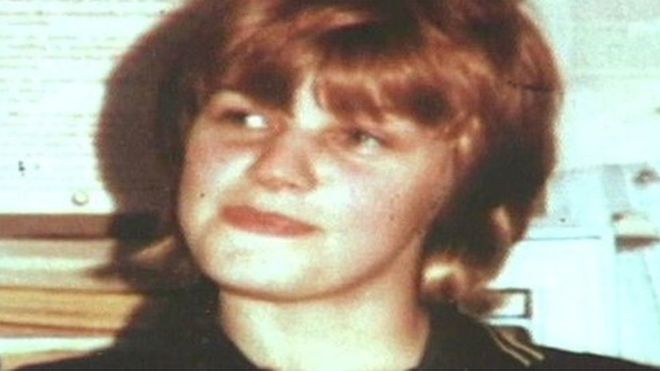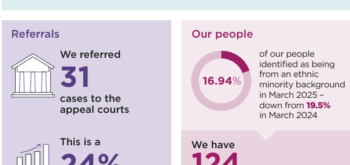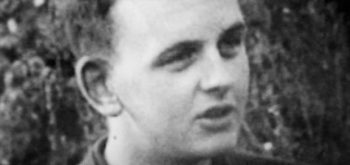#CCRC20: When the police can do no wrong

Karen Price was 15 years old when she went missing
Our student Alex Thomas recently made observations on aspects of alleged police misconduct in certain cases. About half of all the cases we review at Cardiff have revealed, in part at least, problems with police investigation that may cast doubt on the safety of a conviction. How does the CCRC respond to our submissions on those points? To be frank, they don’t generally take kindly to any such suggestion even if it’s supported by expert evidence from independent retired police consultants.
When the CCRC had the confidence to refer a case that appeared to be clearly founded in a quagmire of entrenched police malpractice from years gone by, they got a less than enthusiastic response from the Court of Appeal. That was the ‘body in the carpet’ case of Idris Ali and Alan Charlton. Press coverage reported that the CCRC referred it to the Court of Appeal because ‘there had been concerns about the alleged “oppressive handling” of key witnesses by officers and alleged breaches of police regulations’ – see here. ‘The CCRC had said a number of officers involved in the case also investigated two notorious cases that resulted in miscarriages of justice – the murders of Lynette White and Philip Saunders. The CCRC has also told the Independent Police Complaints Commission (IPCC) and Her Majesty’s Inspectorate of Constabulary about its concerns. IPCC commissioner Jan Williams said it raised important questions about the conduct of South Wales Police during the 1980s and 1990s. “In the light of questions around other similar cases, this clearly raises serious issues for public confidence in the integrity of the force at that time,” she said.’
So how did the Court of Appeal deal with this CCRC referral? Their full judgement can be seen here.
In paragraph 65, the Court said:
‘The CCRC noted that at the time of the investigation into Karen Price’s murder the tactics that had been employed by officers in the Lynette White and Philip Saunders inquiries had not been properly scrutinised. The involvement of some of the same officers in the Karen Price murder inquiry is, the Commission considered, potentially suggestive of a “closed-minded” investigation which, ultimately, leads to the very real possibility that evidence given by various witnesses, both at trial and at crucial stages during the course of the investigation, was falsified and obtained through the use of oppressive techniques and bullying.’
In paragraph 70, the Court said:
‘The CCRC note that some of the original handwritten exhibits in the O’Brien prosecution had disappeared, as have the handwritten originals of D’s critical third statement. Other documents are no longer available… .’
Conveniently missing documents? All sounds familiar, doesn’t it?
Yet in paragraph 116, the Court said ‘however extensive police misconduct may have been in a particular force, each case has to be considered on its merits. A proper analysis must be made of the evidence at trial, the extent to which there is fresh information and its impact on the safety of the conviction. Sweeping generalisations as to alleged misconduct will not suffice.’
Fair enough – we all appreciate that. But, how high is the appeal court setting the bar?
In paragraph 124, the appeal court said:
‘We are prepared to accept there are substantial grounds for concern about the conduct of some of the police officers who investigated the Philip Saunders and Lynette White murders. Given the overlap between officers in those cases and officers involved in the Karen Price murder investigation, we agree with the CCRC that the circumstances of Charlton’s conviction merited full and careful consideration and we are grateful to them for the extraordinarily thorough analysis they have put before the court. They have left no available stone of the investigation unturned.’
The judgement refers to the CCRC’s ‘speculation’ and ‘glossing over facts’, in various parts, and concludes ‘whilst sharing the concerns of the CCRC about the conduct of some officers in the South Wales police force in the late 1980s early 1990s, we dismiss both appeals against conviction’.
So, the CCRC couldn’t persuade the Court of Appeal of the unsafety of this conviction, although the case boasts such clear similarities to police misconduct unearthed in the infamous Cardiff Three and Cardiff Newsagent Three cases. What hope, then, do we have in our cases where the CCRC knows that the bar to persuade the Court of Appeal of unsafety is of Everest proportions? Close to nil, has to be the frank answer.
This is all such a shame (in every sense of that word) in the light of the Hillsborough debacle, from which we know that there are cases of police malpractice on an industrial scale at the highest level. We’re not suggesting that all police investigations are corrupt – far from it. We have direct recent experience of South Wales Police showing signs of willingness to work with us to get to the bottom of cases involving allegations against their force. Time will tell how that pans out, but early signs are very encouraging – at the highest level, there is open recognition of past issues within the force and that these have to be tackled.
So, against the background of the Ali and Charlton appeal, our next article is going to look at one of our cases involving problems with the police investigation. It shows, in our view and in that of two independent police experts, very suspicious police conduct. It also shows how we have failed to persuade the CCRC (to the quote the Court of Appeal) ‘to leave no available stone of the investigation unturned’. Smarting from the Ali/Charlton referral, it’s not hard to see why.
But is that good enough? What does the CCRC see as its role as a general watchdog of the criminal appeals system? How does it react, if at all, when the Court of Appeal refuses to overturn a conviction that the CCRC considers may be unsafe? If it does nothing on the basis that the CCRC is not the decision maker (which is of course correct), then that in itself throws up wider ethical issues.
If it’s not the CCRC’s role to stand up to the issue of potential police misconduct as considered by the Court of Appeal, then whose role is it? Politicians? We, and many others, have raised this issue with the House of Commons Justice Select Committee in recent years, and currently with the Law Commission. But there’s a distinct lack of political will to review this unsatisfactory area of our criminal justice system.
We know from Hillsborough that police malpractice can and does occur on an industrial scale, and at the highest level. We should deal with this honestly rather than fostering a climate of resigned acceptance. Our concern is for lone individuals wanting to challenge a conviction. In the Hillsborough campaign, there were 96 families and a community behind them to give the momentum to fight on for 27 years. Yet if police malpractice featured in individual convictions, why should that be ignored? We call upon the CCRC to make a public stance on such issues where it considers that a miscarriage of justice may have occurred. It’s simply not good enough for them to pass the buck back to the Court of Appeal, recycling the problem without resolution.
If the CCRC is to be an effective watchdog for the wrongfully convicted, and there are many more of those languishing in prison, then it must put pressure on the government to legislate for an effective appeal system that will release the CCRC from its current statutory bind.






